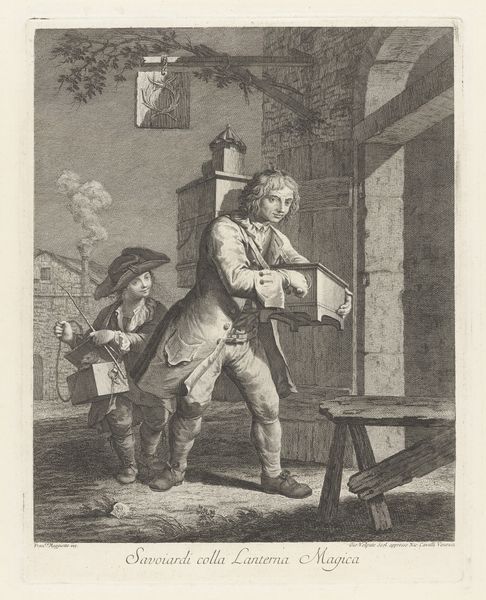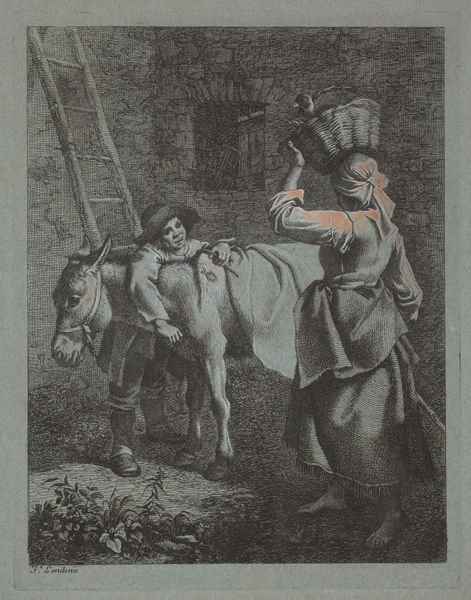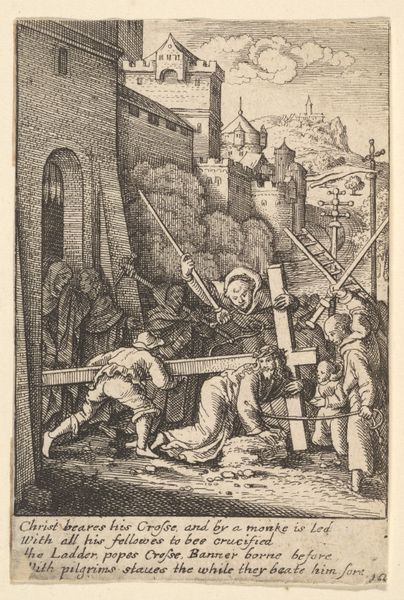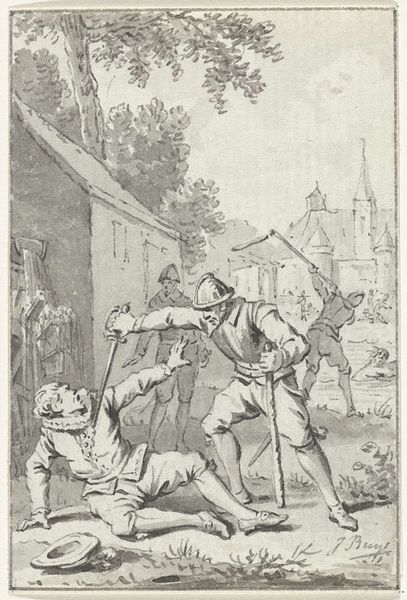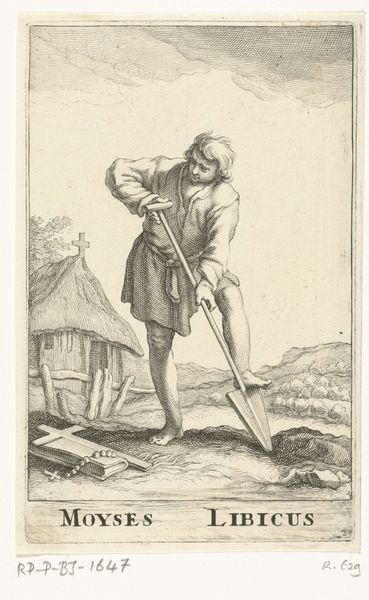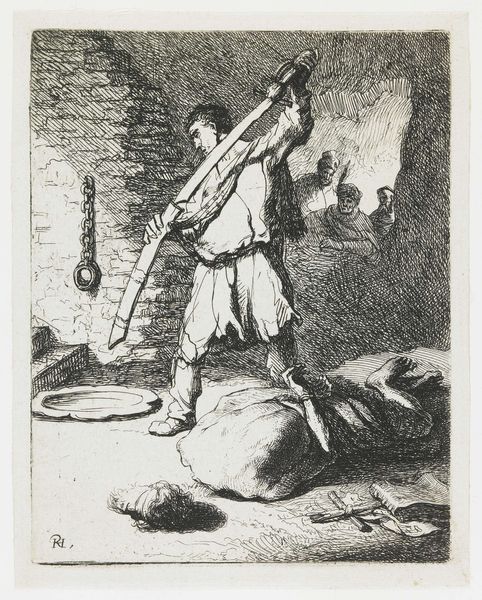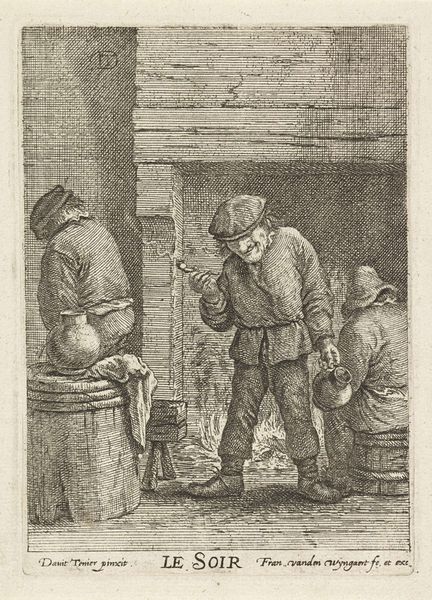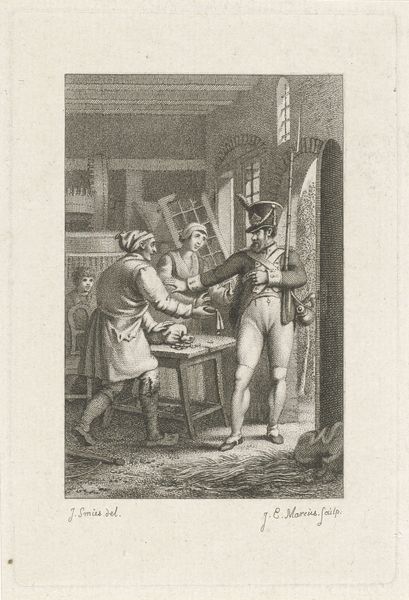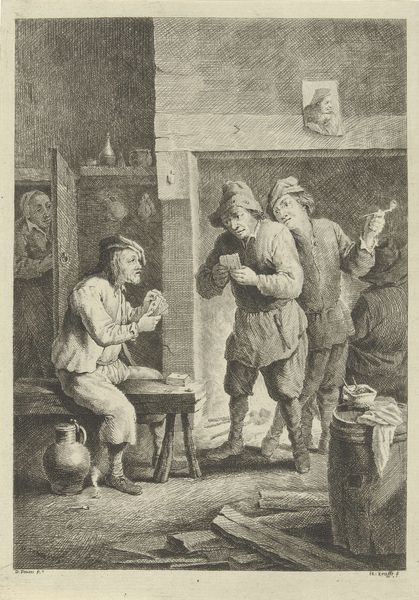
Dimensions: height 378 mm, width 293 mm
Copyright: Rijks Museum: Open Domain
Curator: Let’s look at "De messenslijper", or "The Knife Sharpener," an etching and engraving by Giovanni Volpato, dating somewhere between 1743 and 1803, and currently held in the Rijksmuseum. It presents a detailed scene of a craftsman at work. Editor: My immediate impression is the incredible detail. It feels gritty, you can almost hear the grindstone and see the sparks flying, even though it’s static. It captures a moment in the work life of its subject with authenticity, emphasizing labor as the dominant attribute of being in this world. Curator: Absolutely. And consider the social implications of such a representation during that period. Genre scenes like this began to democratize art, shifting focus away from strictly aristocratic subjects to portrayals of everyday life. How did this shift change who the audience of art was? It made space to highlight laborers like these two figures, lending a sense of dignity. Editor: Right, the dignity of labor is really the heart of this artwork. You can see it in the precise rendering of the grindstone itself and the tools scattered on the ground. It speaks to a relationship with material—the labor and care that shapes our interactions with physical objects. I think we can extend this idea to the paper making process of print making as well. Curator: And the division of labor implied by the figures in the image is worth unpacking, too. A grown man who inspects and tests, presumably the leader, and a younger boy toiling and performing repetitive motions, under a rather crude makeshift roof. How might power dynamics manifest and normalize through material division? Editor: That tension is present, isn’t it? While it's a snapshot of work, it's also subtly commenting on its inherent social structures. I almost feel the grit in the boy's face as he turns the wheel. Volpato clearly demonstrates the direct result of physical involvement on their characters. Curator: Agreed. Considering it now, this piece shows the material conditions of artistic expression intersect deeply with class and societal inequalities. Even a seemingly simple depiction of work speaks to so much more when contextualized historically. Editor: Exactly. And by focusing on these tangible elements, the materials and actions depicted, we can build bridges between high art and the world of ordinary experience. A compelling way to highlight those who make our existence possible.
Comments
No comments
Be the first to comment and join the conversation on the ultimate creative platform.


